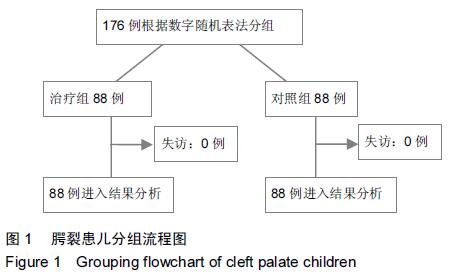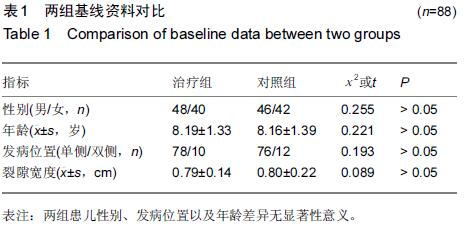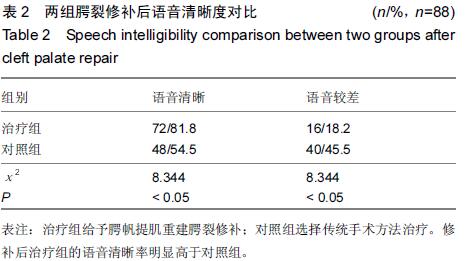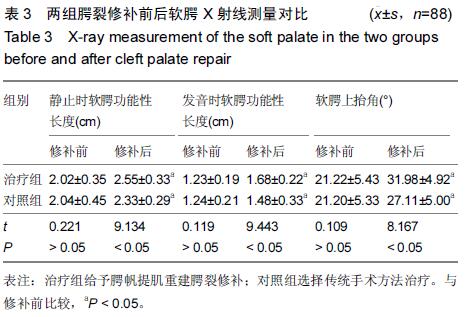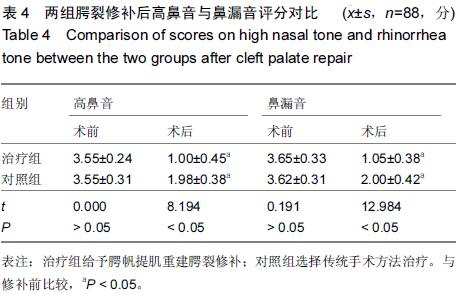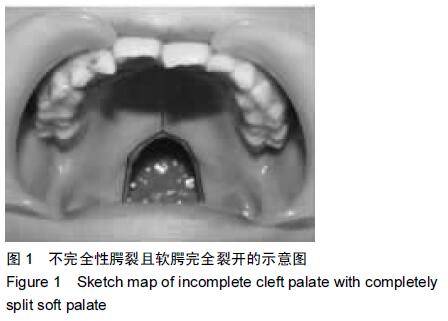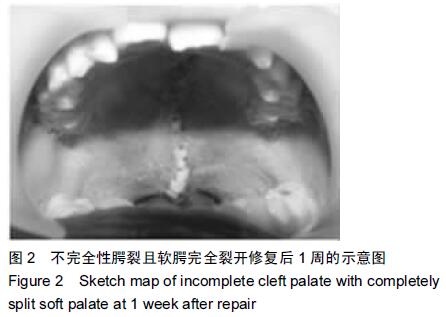中国组织工程研究 ›› 2015, Vol. 19 ›› Issue (46): 7430-7434.doi: 10.3969/j.issn.2095-4344.2015.46.010
• 肌肉肌腱韧带组织构建 tissue construction of the muscle, tendon and ligament • 上一篇 下一篇
腭帆提肌重建腭裂修补后的言语障碍矫治
闫大勇1,张 瑞1,董汉华1,苏会芝2
- 1郑州市中心医院耳鼻喉头颈外二科,河南省郑州市 450000;2河北省优抚医院,河北省石家庄市 050051
Speech disorder correction after cleft palate repair with levator veli palatini retropositioning
Yan Da-yong1, Zhang Rui1, Dong Han-hua1, Su Hui-zhi2
- 1Department of Otolaryngology Head and Neck Surgery, Zhengzhou Central Hospital, Zhengzhou 450000, Henan Province, China; 2Youfu Hospital of Hebei Province, Shijiazhuang 050051, Hebei Province, China
摘要:
背景:腭帆提肌重建腭裂修补仅从裂隙缘切口处行肌肉的解剖和功能重建,不需要两侧黏骨膜瓣的翻开,能使修补后达到较好的腭咽功能与语音效果。 目的:比较腭帆提肌重建腭裂修补后与传统手术治疗言语障碍矫治的临床效果。 方法:腭裂患儿176例根据数字随机表法分为治疗组与对照组各88例,对照组选择传统手术方法治疗,治疗组给予腭帆提肌重建腭裂修补治疗。 结果与结论:治疗组腭裂修补后的语音清晰率为81.8%,对照组为54.5%,治疗组的语音清晰率明显高于对照组(P < 0.05)。两组腭裂修补后的静止时软腭功能性长度、发音时软腭功能性长度、软腭上抬角与修补前对比都明显增加(P < 0.05),同时修补后治疗组上述指标明显高于对照组(P < 0.05)。两组腭裂修补后的高鼻音与鼻漏音评分与治疗前对比都明显下降(P < 0.05),治疗组腭裂修补后的高鼻音与鼻漏音评分明显低于对照组(P < 0.05)。结果说明,腭帆提肌重建腭裂修补能有效重建患者软腭肌作用,对腭咽闭合功能进行修复,对于矫治后解决言语问题,达到较好的语言效果有重要的意义。 中国组织工程研究杂志出版内容重点:组织构建;骨细胞;软骨细胞;细胞培养;成纤维细胞;血管内皮细胞;骨质疏松;组织工程
